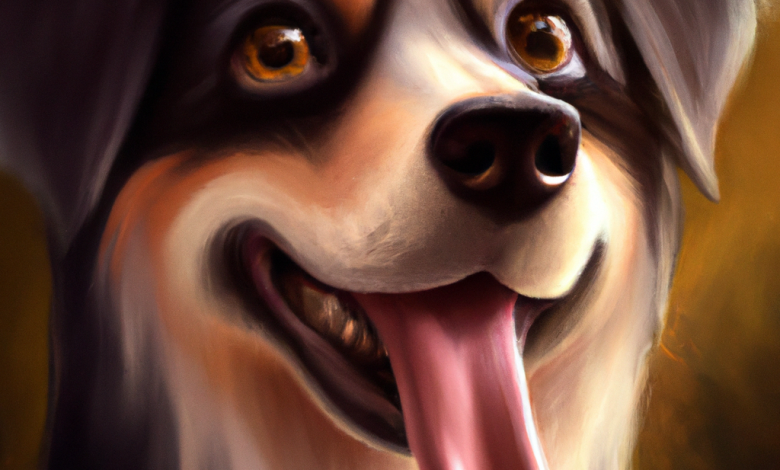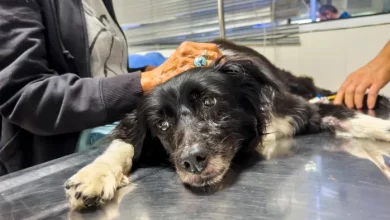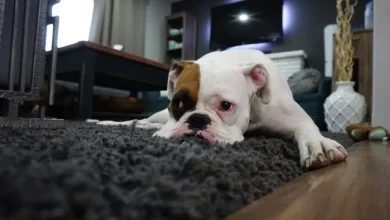10 Common Dog Behavior Problems and Solutions
Understanding the Causes of Common Dog Behavior Problems is an important part of being a responsible pet owner. Knowing the root cause of a dog’s behavior can help you create an environment that is conducive to good behavior and can help you address any issues that arise.
One of the most common behavior problems in dogs is aggression. Aggression can be caused by a variety of factors, including fear, dominance, territoriality, and pain. Fear aggression is often seen in dogs that have been abused or neglected, or those that have had a traumatic experience. Dogs may also become aggressive if they feel threatened or if they are trying to protect something they consider to be valuable. Dominance aggression is often seen in dogs that are trying to establish themselves as the leader of the pack. Territorial aggression can be seen in dogs that are trying to protect their home or yard. Pain aggression can be seen in dogs that are in pain or discomfort and may lash out when touched or approached.
Separation anxiety is another common behavior problem in dogs. Dogs that suffer from separation anxiety may become destructive when left alone, bark excessively, or try to escape. This behavior is often caused by a lack of early socialization, a traumatic experience, or a change in routine.
Barking is another common behavior problem in dogs. Barking can be caused by boredom, fear, excitement, or territoriality. Dogs may bark to alert their owners to potential danger, to get attention, or to express their
Preventing Problem Behaviors in Dogs
Preventing problem behaviors in dogs is an important part of responsible dog ownership. Problem behaviors can range from minor annoyances such as barking and jumping to more serious issues such as aggression and destructive behaviors. Fortunately, there are a number of steps that can be taken to help prevent problem behaviors from developing in the first place.
The first step in preventing problem behaviors is to provide your dog with proper socialization. Socialization helps your dog learn how to interact with other animals and people in a positive way. This can be done by taking your dog to the dog park, introducing them to other animals, and having them meet new people.
The second step is to provide your dog with plenty of exercise. Exercise helps to keep your dog physically and mentally healthy, which can help to reduce problem behaviors. Exercise can include walks, runs, and playing games such as fetch.
The third step is to provide your dog with consistent training. Training helps your dog to understand what is expected of them and can help to prevent problem behaviors from developing. Training should be done in a positive manner and should be consistent.
The fourth step is to provide your dog with plenty of mental stimulation. Mental stimulation helps to keep your dog’s mind active and can help to prevent problem behaviors from developing. This can include providing your dog with interactive toys, teaching them new tricks, and playing games with them.
The fifth step is to provide your dog with plenty of love and
Training Solutions for Common Dog Behavior Problems
Training solutions for common dog behavior problems are an important part of being a responsible pet owner. Dogs are social animals and need to be taught how to behave in order to be good companions. Training is a process that requires patience, consistency, and positive reinforcement to be successful.
The first step in addressing common dog behavior problems is to identify the issue. Common issues include barking, jumping, chewing, digging, and aggression. Once you’ve identified the issue, you can begin to develop a training plan.
The most important part of training is consistency. Dogs learn best when they are given consistent commands and rewards. It’s important to be consistent in the words you use, the tone of your voice, and the rewards you give. For example, if you want to train your dog to stop barking, you should use the same command each time and reward the dog for not barking.
Positive reinforcement is another important part of training. Rewards should be given when the dog performs the desired behavior. This could be a treat, a toy, or verbal praise. It’s important to avoid punishing the dog for bad behavior as this can lead to fear and aggression.
It’s also important to be patient when training your dog. Dogs can’t learn overnight and it may take some time for them to understand the commands. If you’re patient and consistent, you’ll be able to successfully train your dog.
Dealing with Aggression in Dogs
Dealing with aggression in dogs can be a difficult and stressful situation for pet owners. Aggressive behavior in dogs can range from barking, growling, snapping, and even biting. It is important to understand the underlying cause of aggression in order to effectively address it.
The most common causes of aggression in dogs are fear, dominance, possessiveness, and territorial behavior. Fear-based aggression is triggered by a perceived threat, such as a person or another animal. Dogs may bark, growl, and even bite in order to protect themselves. Dominance aggression is often seen in dogs that are trying to establish themselves as the alpha in the household. They may bark, growl, and lunge at other dogs or people. Possessive aggression is seen when a dog is trying to protect a resource, such as food or a toy. Territorial aggression is seen when a dog is trying to protect their home and property.
When dealing with aggression in dogs, it is important to remain calm and avoid physical punishment. Punishment can often make the worse by increasing the dogs fear and anxiety., it is important to focus on positive reinforcement reward-based training. This can help to reduce the dog’s aggressive behavior and teach them more appropriate ways to respond to situations.
It is also important to provide the dog with plenty of exercise and mental stimulation. This can help to reduce stress and anxiety, which can be a major cause
Managing Separation Anxiety in Dogs
Separation anxiety is a common behavioral issue in dogs that can cause them to become destructive, bark excessively, and even urinate or defecate in the house when left alone. It is important to recognize the signs of separation anxiety in your dog and take the necessary steps to manage it.
The first step in managing separation anxiety in dogs is to identify the triggers that cause your dog to become anxious. Common triggers include leaving the house, a change in routine, or a change in the family dynamic. Once you have identified the triggers, you can begin to create a plan to help your dog cope with the anxiety.
One of the most effective ways to manage separation anxiety is through desensitization. This involves gradually exposing your dog to the trigger in a controlled environment. For example, if your dog gets anxious when you leave the house, start by leaving the house for a few minutes and then gradually increase the time you are away. This will help your dog become more comfortable with being alone and help him to learn that it is okay to be away from you.
It is also important to provide your dog with plenty of exercise and mental stimulation. Exercise will help to tire your dog out and reduce his anxiety Mental stimulation can be provided through activities such as puzzle toys, training, and playtime. This will help to keep your dog’s mind occupied and reduce his anxiety.
Another important part of managing separation anxiety in dogs is to provide them
Excerpt
Dog behavior problems can range from excessive barking to aggression and can be difficult to manage. Fortunately, there are many solutions that can help address these issues. Common solutions include positive reinforcement, crate training, and obedience classes. With patience and consistency, these solutions can help owners create a better relationship with their canine companions.








